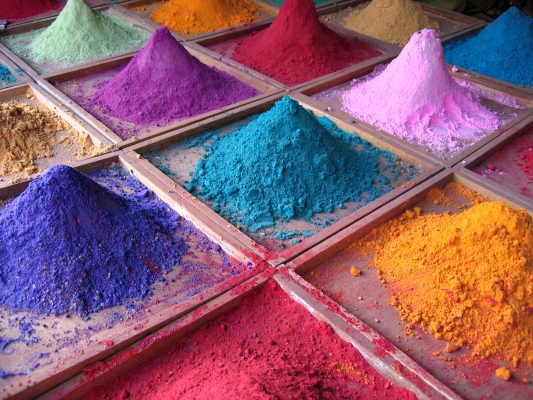Dr. William Rae, MD, Director of the Environmental Health Center in Dallas, suggests that our bodies are like a rain barrel. Every day we dump in pollutants in the form of the food we eat, the water we drink, and the air we breathe. Some of the pollutants are stored in our body’s adipose (fat) tissue, while some is used for energy, and the rest is expelled. Each person has a different threshold for tolerating pollutants in our environment, or using Dr. Rae’s analogy, a different size barrel. Over time, if that barrel becomes full, as toxins accumulate in our bodies, it will “overflow” and the result will be allergic reactions or hyper-sensitivity to environmental chemicals.
Every finish in a home should be carefully considered for its health consequences. Let’s look at paint as one example: Many available paints contain chemicals that are listed as Hazardous Air Pollutants with the EPA. Although initial clean air regulations were enacted as early as the late 18th century during the Industrial Revolution, it was only in 1955 that the need for a National Air Pollution Control Act was realized. The Clean Air Act, as it is called since 1963, covers a wide range of air pollutants that contaminate outdoor as well as indoor air. Since volatile organic compounds (VOCs) contribute greatly to ground-level ozone, which is a major component of smog, the EPA sets VOC emission guidelines for consumer products, architectural coatings and automobile refinish coatings. VOC content of flat coatings is limited to 250 g/l therein. However After a fresh paint application, indoor VOC levels can increase up to 1,000 times compared to outdoor levels.
Several certifying bodies offer their certification for products that are more stringent than EPA standards:
The independent, non-profit organization Green Seal (USA) took the EPA’s VOC emission standards one step farther and awards its seal of approval only to those interior paints that contain less than 50 g VOC per liter (flat) or 150 g per liter (non-flat).
The GreenGuard Environmental Institute, issues stringent allowable emission levels for VOCs based on VOC content in the air.(0.5 mg/m3). In Canada, the Environmental Choice Program grants certification for paints containing less than 200 g VOCs per liter. In Germany, the Blue Angel program sets similar standards.
Compared to conventional paints containing up to 800g VOCs per liter, all certified low-emission paints, especially Zero VOC paints9, are a better choice. Still, it is important to educate oneself on what a certain certification means. Something that is labeled “green” does not necessarily mean that it is totally harmless. Zero VOC paints, for example, are allowed to contain up to 0.5 g VOCs per liter. And as soon as colorants are added, VOCs are introduced again, although in small amounts. Many latex paints also have biocides added.
The Building Biology rules of thumb for surface finishes in a home is to make selections that are natural, with pleasant or no scent and that are minimally processed: Paint as little as possible. Consider natural wood, cork and clay or lime-based plaster wall finishes instead., Where you do paint select a natural product, which fully declare all ingredients, or mix your own.
One tool to help us determine if a finishing product is harmful Is a Material Safety Data Sheet or MSDS. Although the MSDS will not tell us everything we might want to know it is, never the less, a helpful tool. These are readily available through on-line searching because each product manufacturer is required to produce an MSDS.
Want to learn more on this issue? Click the comprehensive online course, here below.


